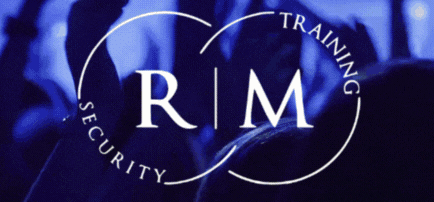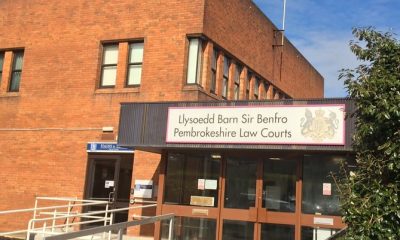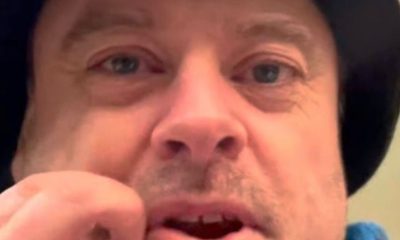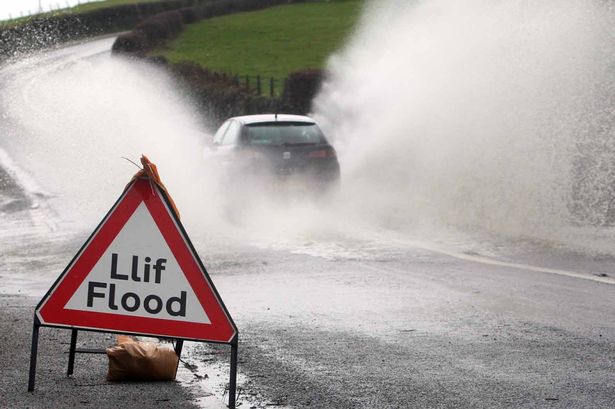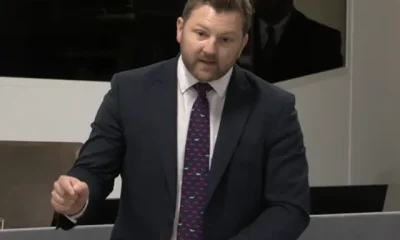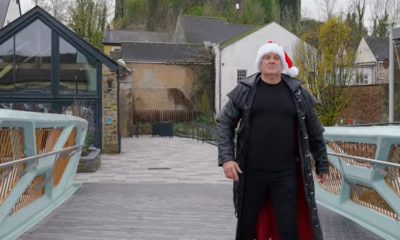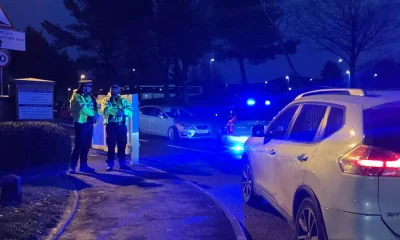News
Prosecution: Bevan ‘a bully that would viciously batter a two-year-old’
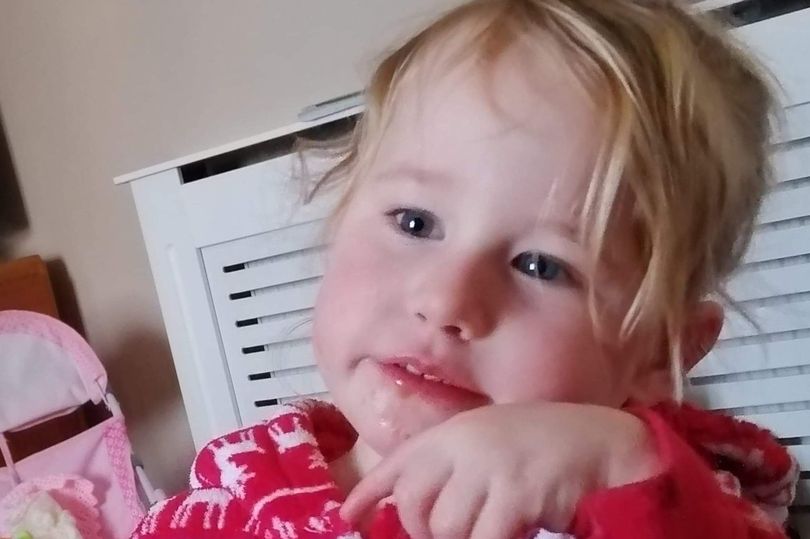
DURING closing statements in the murder trial of Lola James from Haverfordwest, murder accused Bevan was branded a “bully”.
In her closing statement, Caroline Rees KC, for the Crown Prosecution Service told Swansea Crown Court how on the evening of July 16, 2020, Lola James described as a “beautiful, bright two-year-old” went to bed without a bump, scrape or bruise on her body, apart from the nose injury in which she received the week before.
By 6.32am the following morning, Lola was “battered, scratched, heavily bruised from head to toe, unconscious and seriously injured”.
The prosecution argues that these injuries were caused at the hands of Kyle Bevan, 31, who is accused of murdering the tot during a “brutal, frenzied violent attack”.
Lola had catastrophic head injuries along with 101 surface injuries on her tiny body when she was presented to hospital.
Tragically, on July 21, 2020, Lola succumbed to her injuries at University Hospital of Wales, Cardiff
Bevan has maintained his innocence throughout the case, insisting that Lola’s extensive injuries were caused by the family dog jumping up and knocking her down 12 carpeted stairs.
Ms Rees KC said: “To cause such serious and extensive injuries must have involved a frenzied, brutal attack with blunt force trauma all over her head and body along with violent shaking which caused the head and eye injuries.”
As mentioned in their opening statement, the Crown makes no suggestion that Sinead James, 30, Lola’s mother, took part in the “attack” or was aware that it was happening.
At the time of the incident, James was asleep upstairs in her bed with the door open.
Caroline Rees went on to say: “The fact that Sinead James had not been woken by noise whilst Lola was under attack suggests that Kyle Bevan rendered Lola unconscious early on, but carried on to inflict injuries.”
At 4.26am Bevan took a photograph of Lola on his mobile phone. Lola was conscious, but had bruising and marks to her upper back. It is not believed that Lola had sustained the catastrophic head injury at this point.
At 6.32am, Bevan used his mobile phone to make an internet search which read: “My two-year old child has just taken a bang to the head and gone all limp and snoring, what’s wrong?.”
This was followed by a screenshot from a medical website which states medical assistance should be sought immediately.
Despite this an ambulance was not called for almost another hour.
Ms Rees said: “Bevan’s behaviour between 6.32am and 7.20am proves beyond doubt there was no accidental fall down the stairs from a dog.
“Bevan needed that hour to conduct lies to protect himself and come up with an excuse as to how an alive and well to a perilous state to cover his tracks.”
Mr Hipkin KC, Bevan’s barrister, took reference to this during his closing statement. Citing that Bevan was not the most intelligent or articulate person.
“He has been criticised relentlessly by normal standards for not calling an ambulance – does it mean he’s guilty? Or might be an innocent explanation.
“His mother said he believed she could fix things, he’s done that all his life. He did eventually ask her to call an ambulance.”
The prosecution went on to make reference to the fact that Bevan did not take to the witness stand.
They proposed they would have sought to get answer to the following:
- Why was lola wet when the ambulance arrived?
- Why was there vomit on a onesie and Lola’s duvet,
- How did lola get through baby gate?
- Why was the bath cleaned?
- Where did Lol’s tattoo vanish too?
- Explanation for the delay of an hour to call an ambulance or wake her mother?
Ms Rees said the answer to this was simple, that Bevan could not offer any answer to what happened on that morning.
“ The prosecution’s position is clear.
“Bevan is a bully, the kind of bully that would viciously batter a two-year-old child.
“Like most bullies, he is a coward and not willing to stand in that witness box and give his account.”
This was something opposed by Bevan’s barrister.
On this matter, Mr Hipkin simply invited the jury to remember that Bevan had undergone hours and hours of police interview for which he had cooperated.
Mr Hipkin said: “What can be said is he has been interviewed on this on many occasions and answered questions repeatedly. Hour after hour, year after year.”
The prosecution asked the jury to consider all the medics and medical expert opinions.
She added: “You heard from many doctors. Every single medic that saw Lola noted extensive and significant injuries and they all expressed concerns that this was not accidental.”
The prosecution argues that Bevan had a “volatile and unpredictable temper” and on July 17, launched a “murderous attack” on the defenceless two-year-old.
Ms Rees said: “Everything you heard about him demonstrates an aggressive and unpredictable temper which was exacerbated by drugs such as amphetamine and xanax and alcohol.”
The prosecution argues that James knew Bevan was a “volatile” and “angry” man due to past incidents witnessed by her along with her history of previous domestic violence relationships should have set off “alarm bells”.
She said: “With her knowledge and things witnessed herself. Alarm bells should have been loud and clear.
“On the date of the fatal attack, she heard a bump and scream.
“She had an opportunity to intervene but didn’t.
“Instead left her with what we say is Lola’s killer.
“Prioritising his need to be trusted with lola over Lola’s safety.”
Something that Mr Elias KC, James’ barrister denies.
Mr Elias said: “On that morning Sinead James woke to every parent’s nightmare.”
He asked the jury to remember the evidence provided to the court by Social Services and James’ Health Visitor.
Both gave evidence in the stand to the fact that James had engaged well with all of the authorities working with her, and had not concealed any of the injuries that the children had suffered leading up. Which he suggested meant she genuinely considered them accidents.
He added that Sinead had already recognised and took herself and her children away from two other domestic violence relationships and that social services were content with her parenting and ability to keep her children safe and concluded that James had done everything that was asked of her.
He invited the jury to remember that James had no reason to disbelieve Bevan’s account of how small bumps and bruises had appeared on the children in the week prior to Lola’s death.
During police interviews, James had told officers that she had failed her children and that she wished she had never met Bevan.
Mr Elias went on to say, how when you hear of these awful injuries, every parents is going to question themselves on what they could have done different.
He said: “Every parent is going to say omg i failed them.
“She’s going to say that to herself for the rest of her life.”
Mr Elias asked the Jury to take into consideration that hindsight is an incredible thing, and that James must be judged on what she knew at the time and not what she knows now after seeing evidence.
He added: “What she knew then was a very different picture indeed.”
Mr Rees closed his statement by saying:“The totality of evidence safely and surely finds it proved that Bevan attacked Lola intending at very least to cause that little girl serious injury.
“The evidence points to one conclusion that Kyle Bevan is guilty of murder.”
The Court heard how the dog in question, Jesse, was put down in 2022 after attacking a person.
Closing his statement, Mr Elias said: “There was arguments and damage caused, she was grabbed, on one occasion. He didn’t hit her, he treated the kids regularly very well.
“She was always open about the injuries, constantly reassured by friends and family that all was fine, accidents happen.”
Mr Elias went on to tell the court how before the evening of 16th July, no significant injuries were apparent on the children.
And indeed if Bevan did launch a “frenzied attack rendering Lola unconscious” that behaviour was completely out of the blue.
The jury is expected to start deliberation before lunch time tomorrow morning.
Crime
Man charged with strangulation and assault offences after October incident
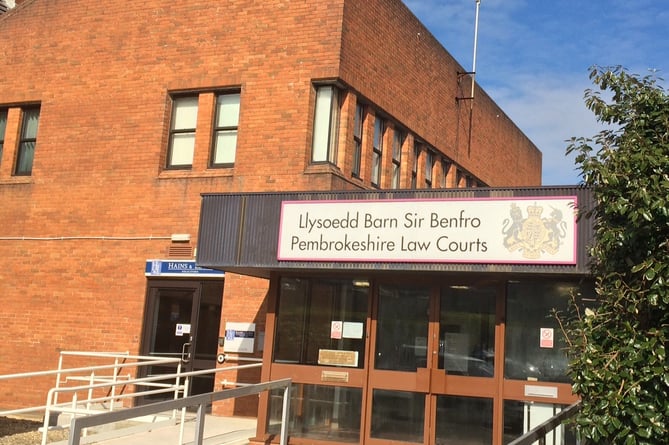
A MAN recorded in court as having no fixed abode has appeared before magistrates charged with intentional strangulation and two further assault offences.
Michael Sudbury, 50, whose address was not read out in court, but in Herald records is Glan Hafan, Llangwm, appeared before the bench facing multiple charges.
The charges relate to an incident on 22 October 2025 and include:
- Intentional strangulation, contrary to section 75A of the Serious Crime Act 2015
- Common assault
- Assault by beating
No further details of the alleged incident were opened in court, and no plea was entered at this stage.
Sudbury was remanded on conditional bail, with the case listed to return to magistrates later this month.
Crime
Haverfordwest man sent to Crown Court on multiple serious charges

Defendant remanded in custody
A HAVERFORDWEST man has been sent to Swansea Crown Court to stand trial on a series of A 49-year-old Haverfordwest resident has been committed to Swansea Crown Court to face trial on multiple serious charges deemed too grave for magistrates to handle.
David Guy, of Market Street, Haverfordwest, appeared before Haverfordwest magistrates facing a series of allegations stemming from a single case. The charges, which were not detailed in open court, include:
- Assault occasioning actual bodily harm (ABH)
- A second count of assault
- Criminal damage
- An additional allegation of interpersonal violence
- A public order offence
Magistrates declined jurisdiction, determining that the matters exceeded their sentencing powers, and sent the case in its entirety to Swansea Crown Court.
Guy was remanded in custody pending his next appearance. The court register notes: “Sent to Crown Court for trial in custody – next hearing at Swansea Crown Court.”
A date for the initial Crown Court hearing will be set administratively. Guy will remain in custody until then.
The Pembrokeshire Herald will provide further updates as the case progresses in the Crown Court.
Crime
Castlemartin man back before magistrates over multiple alleged assaults
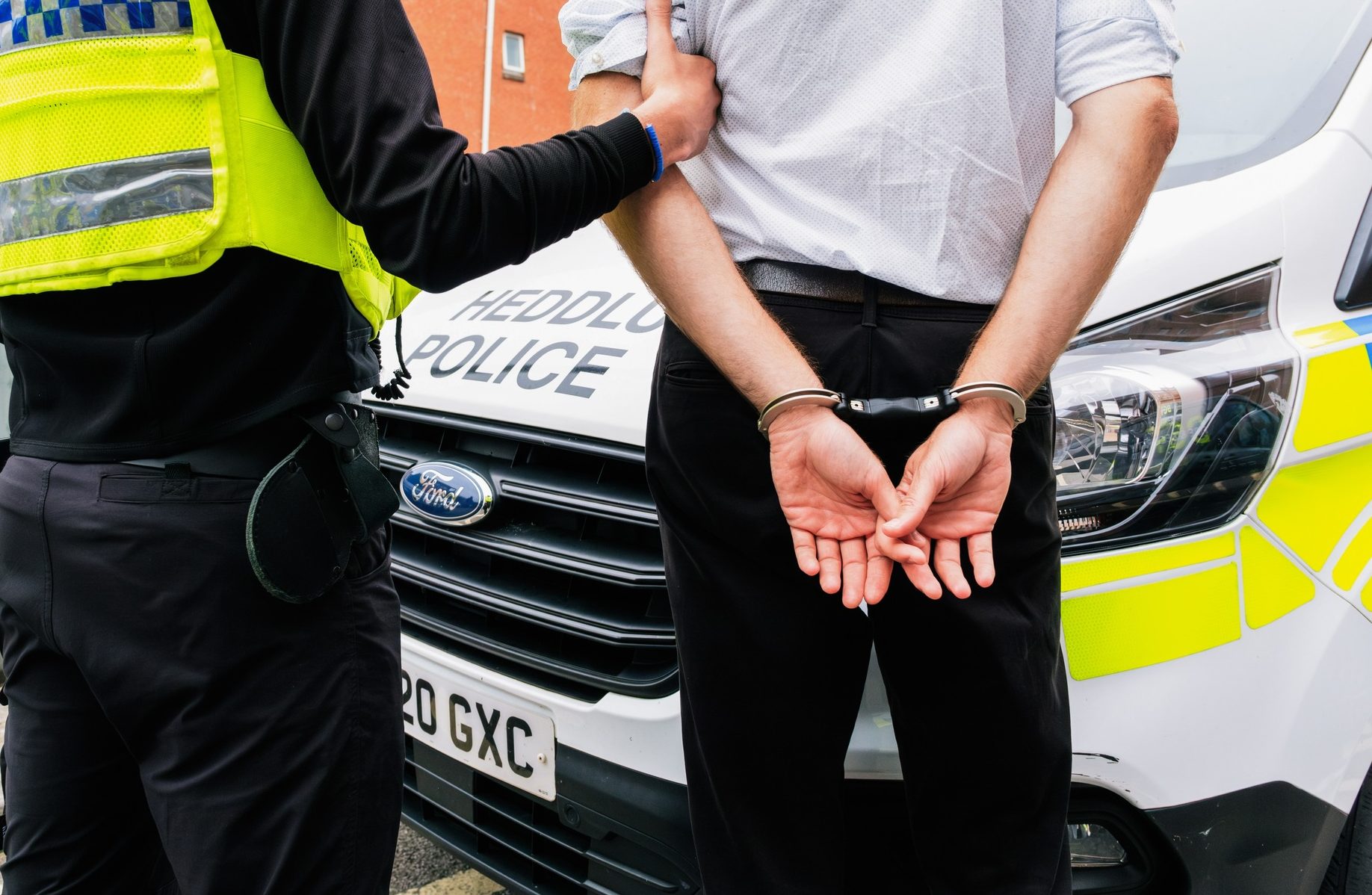
Defendant remanded on conditional bail ahead of further hearing
A CASTLEMARTIN man has appeared repeatedly before magistrates this month over a string A 40-year-old man from Castlemartin has made repeated appearances before magistrates this month in connection with a series of serious alleged offences, including assault occasioning actual bodily harm (ABH), intentional non-fatal strangulation, common assault, and criminal damage.
Anthony Alcock, of Pwll Street, Castlemartin, is facing six linked charges stemming from incidents said to have occurred earlier this year. These appear to relate to the same complainant in what is understood to be a single ongoing domestic abuse prosecution.
During recent administrative hearings at Haverfordwest Magistrates’ Court, Alcock did not enter pleas while matters of bail and case management were addressed.
Charges Include:
- Assault occasioning actual bodily harm (ABH)
- Intentional non-fatal strangulation
- Common assault on a woman
- Criminal damage in a domestic context
- Additional assault allegations involving the same complainant
- Breach of bail conditions
Alcock was initially granted conditional bail but was subsequently brought before the court on two occasions for alleged breaches. On those instances, magistrates remanded him in custody ahead of further hearings. He was later re-granted conditional bail, subject to strict conditions such as no contact with the complainant and exclusion from specified locations.
Magistrates have now declined jurisdiction, ruling that the case—particularly the more serious charges involving non-fatal strangulation—is too grave for summary trial. It has been committed to Swansea Crown Court for plea, trial, or sentencing.
No detailed evidence has been presented in open court at this preliminary stage. Alcock remains on conditional bail pending his next appearance at the Crown Court.
-

 Crime6 days ago
Crime6 days agoPhillips found guilty of raping baby in “worst case” judge has ever dealt with
-
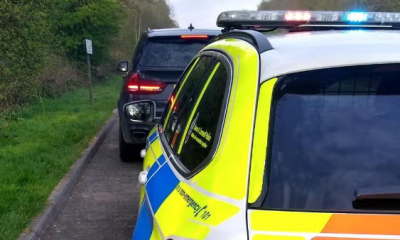
 Crime5 days ago
Crime5 days agoKilgetty scaffolder sentenced after driving with cocaine and in system
-

 Crime5 days ago
Crime5 days agoHousing site director sentenced after failing to provide breath sample following crash
-

 Crime5 days ago
Crime5 days agoMotorist banned for three years after driving with cannabis in system
-
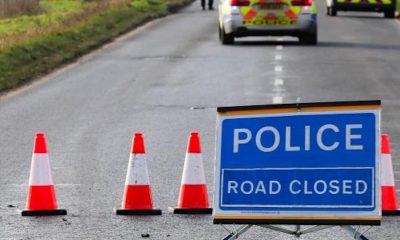
 News16 hours ago
News16 hours agoDyfed-Powys Police launch major investigation after triple fatal crash
-

 Education4 days ago
Education4 days agoTeaching assistant struck off after asking pupil for photos of her body
-

 Crime1 day ago
Crime1 day agoMan spared jail after baseball bat incident in Milford Haven
-

 News7 days ago
News7 days agoJury retires tomorrow in harrowing Baby C rape trial



